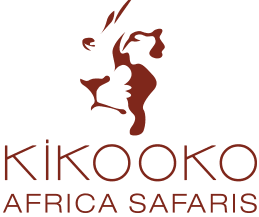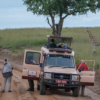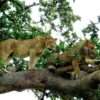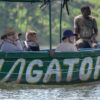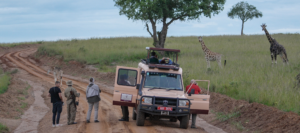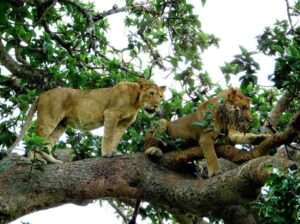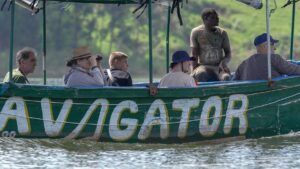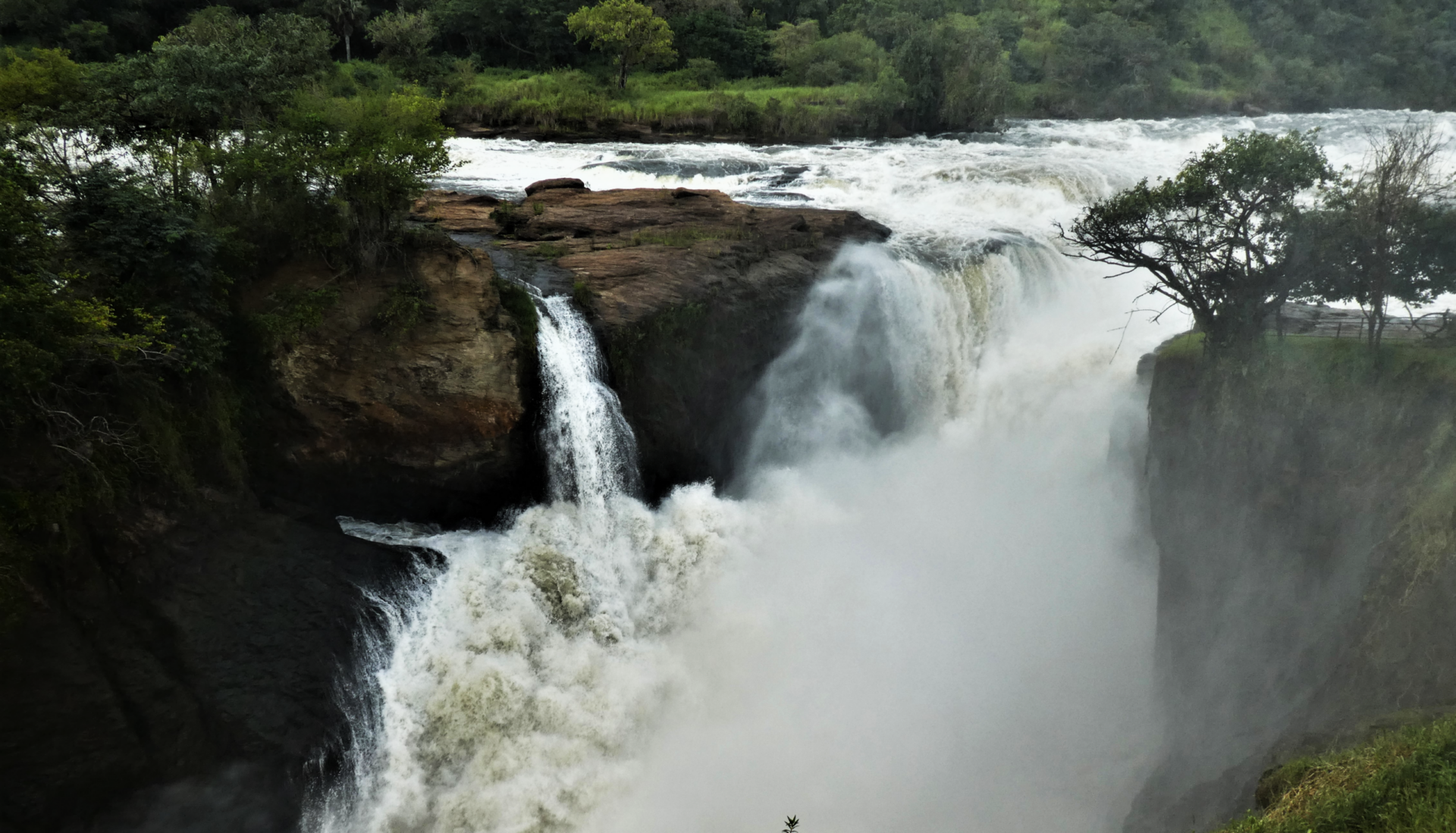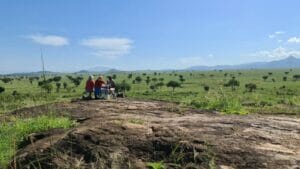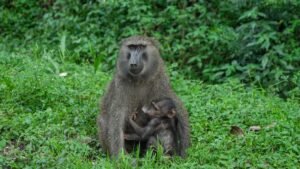Gorillas, our majestic and intelligent primate cousins, have captivated the hearts and minds of people around the globe. These incredible creatures not only share a striking resemblance to us but also exhibit a complex social structure that is both fascinating and awe-inspiring.
While some gorillas can be found in zoos and sanctuaries, witnessing them in their natural habitat is a truly unparalleled experience. Plus, for others, like the mountain gorillas of Uganda and Rwanda, it is only possible to visit them in the wild.
In this comprehensive blog post, we will delve into the world of gorilla trekking and explore the best places to see gorillas in the wild.
- Understanding Gorillas
- Factors to Consider When Choosing the Best Place to See Gorillas
- Top Destinations for Gorilla Trekking
- Planning and Preparing for Gorilla Trekking
- Effective Communication and Order Management
- Conservation Efforts and Impact of Gorilla Trekking
- Planning and Preparing for Gorilla Trekking
- Travel With Kikooko Africa Safaris To See Gorillas In The Wild
Understanding Gorillas
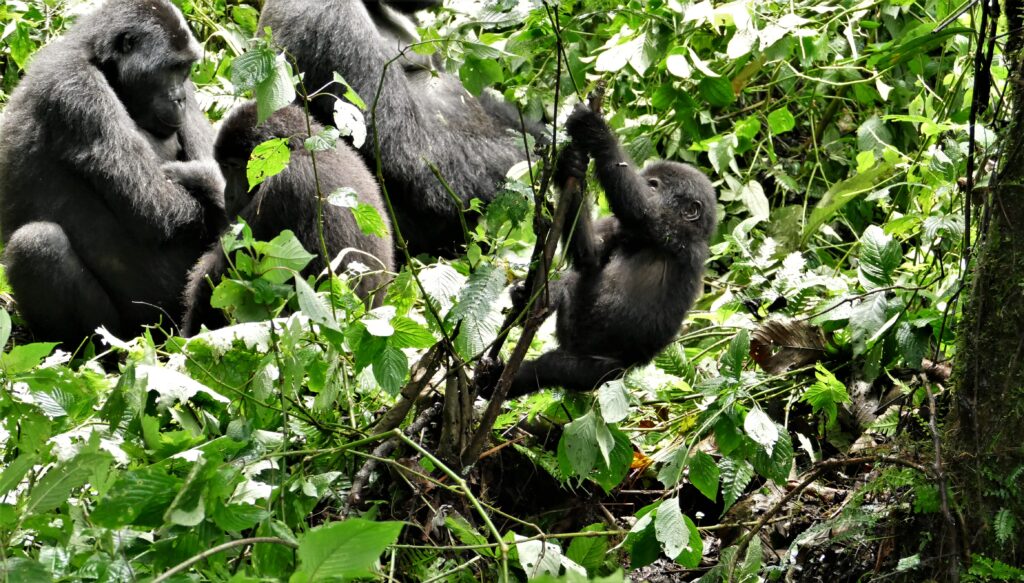
Before we embark on our journey to discover the best locations for gorilla trekking, it is essential to gain a deeper understanding of these magnificent creatures. Gorillas are divided into two species: the Eastern Gorilla (Gorilla beringei) and the Western Gorilla (Gorilla gorilla).
Each species is further classified into subspecies, including the critically endangered mountain gorillas (Gorilla beringei beringei) and the endangered western lowland gorillas (Gorilla gorilla gorilla).
Gorillas primarily inhabit the dense forests of central and eastern Africa. From the misty mountains of Virunga National Park to the impenetrable jungles of Bwindi, these primates have carved out their territories in some of the most remote and breathtaking locations on the planet. Their social structure revolves around cohesive family units led by a dominant silverback male, with females and their offspring forming the core of the group.
Sadly, gorillas face numerous threats to their survival, including habitat loss, poaching, and disease. Conservation efforts have been instrumental in protecting these remarkable creatures, but our responsibility to ensure their existence in the wild remains crucial.
Factors to Consider When Choosing the Best Place to See Gorillas
When planning a gorilla trekking adventure, several factors come into play. The choice of the destination plays a vital role in determining the quality of your experience. Considerations such as geographic location, accessibility, cost, permits and regulations, group size, trekking difficulty, safety, and climate should all be taken into account.
Geographic location and accessibility are important factors to consider when choosing a destination for gorilla trekking. The proximity to major cities, availability of transportation options, and ease of access to the gorilla habitats can significantly impact your overall experience. Some locations may require long and arduous journeys, while others may offer more convenient access.
Additionally, budget considerations play a role in determining the best place to see gorillas in the wild. Costs associated with permits, accommodations, transportation, and other expenses can vary depending on the destination. It is essential to research and plan accordingly to ensure that your trip fits within your financial means.
Permits and regulations are crucial aspects of gorilla trekking. Due to the fragile nature of gorilla populations, permits are typically required to visit them in their natural habitat. These permits help regulate the number of visitors and contribute to conservation efforts. It is important to understand the permit application process, availability, and any specific regulations associated with each destination.
Group size and trekking difficulty are factors that can greatly impact your gorilla trekking experience. Some destinations limit the number of visitors per gorilla family, ensuring a more intimate encounter. Additionally, the terrain and hiking conditions can vary, ranging from relatively easy to strenuous. Considering your physical fitness level and preferences is important when choosing the best place to see gorillas.
Safety is paramount when venturing into the wild to see gorillas. It is crucial to select destinations that prioritize visitor safety and have established protocols in place. Local guides and trackers with extensive knowledge of gorilla behavior and the surrounding environment play a vital role in ensuring a safe and enjoyable experience.
Lastly, climate and weather conditions are factors to be mindful of when planning your gorilla trekking adventure. Understanding the seasonality, rainfall patterns, and temperature variations can help you make informed decisions on the best time to visit and what to pack for your trip.
In the next sections, we will explore three of the top destinations for gorilla trekking: Volcanoes National Park in Rwanda, Bwindi Impenetrable National Park in Uganda, and Virunga National Park in the Democratic Republic of Congo. Each location offers a unique experience, and understanding the specific characteristics of these destinations will aid in making an informed choice for your gorilla trekking adventure.
Top Destinations for Gorilla Trekking
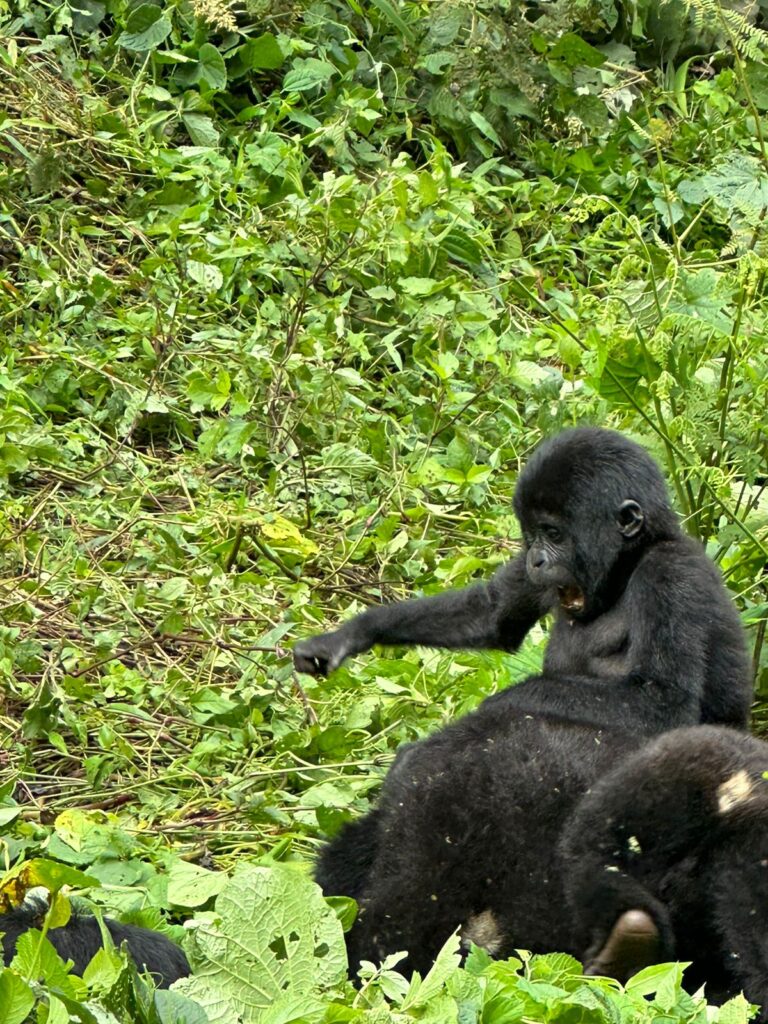
When it comes to gorilla trekking, there are a few standout destinations that offer incredible opportunities to witness these majestic creatures in their natural habitat. Each destination has its own unique characteristics, from the lush landscapes of Volcanoes National Park in Rwanda to the dense jungles of Bwindi Impenetrable National Park in Uganda and the rugged terrain of Virunga National Park in the Democratic Republic of Congo. Let’s explore these top destinations in detail:
Volcanoes National Park, Rwanda
Located in the Virunga Mountains, Volcanoes National Park is a haven for the critically endangered mountain gorillas. The park covers an area of approximately 160 square kilometers and is home to ten habituated gorilla families. The lush volcanic landscape, characterized by mist-shrouded peaks, dense bamboo forests, and vibrant flora, sets the stage for an unforgettable gorilla trekking experience.
One of the key advantages of visiting Volcanoes National Park is its proximity to the capital city of Kigali. This makes it easily accessible for travelers and reduces travel time. Upon arrival, visitors are greeted by the warm hospitality of the Rwandan people and can immerse themselves in the vibrant local culture.
Gorilla trekking in Volcanoes National Park is a well-regulated activity, with strict guidelines in place to ensure the safety and well-being of both the gorillas and visitors. Each day, a limited number of permits are issued, allowing for a small group of visitors to embark on the trek to see a specific gorilla family. This ensures an intimate and immersive experience, where you can observe the gorillas in their natural habitat without feeling crowded or rushed.
The trekking experience in Volcanoes National Park can vary in duration and difficulty, depending on the location of the gorilla family being visited. Treks can range from a few hours to a full day, and the terrain can be steep and challenging at times. However, the reward of encountering these gentle giants up close is well worth the effort.
After an exhilarating day of gorilla trekking, visitors can retreat to one of the many lodges and accommodations available near the park. These accommodations range from luxury lodges to more budget-friendly options, ensuring there is something for every traveler’s preferences and budget.
Bwindi Impenetrable National Park, Uganda
Nestled amidst the mist-covered hills of southwestern Uganda, Bwindi Impenetrable National Park is a UNESCO World Heritage Site and home to almost half of the world’s remaining mountain gorilla population. The park spans an area of approximately 331 square kilometers and is renowned for its incredible biodiversity, encompassing dense forests, cascading waterfalls, and a rich variety of plant and animal species.
Gorilla trekking in Bwindi offers a truly immersive experience, as visitors navigate through the dense undergrowth and rugged terrain in search of the habituated gorilla families. The park is divided into different sectors, each offering a unique trekking experience. The sectors include Buhoma, Ruhija, Rushaga, and Nkuringo, each with its own set of gorilla families available for visitation.
One of the key advantages of visiting Bwindi is the opportunity to combine gorilla trekking with cultural interactions. The park is surrounded by local communities, and visitors can engage in community-based activities such as village walks, cultural performances, and craft workshops. This not only adds depth to the overall experience but also contributes to the sustainable development of the local communities.
As with Volcanoes National Park, permits are required to undertake gorilla trekking in Bwindi. The permits are limited in number to ensure the conservation of the gorillas and their habitat. It is advisable to book permits well in advance, as they tend to sell out quickly, especially during peak seasons.
Accommodation options in Bwindi range from luxury lodges to eco-friendly and budget-friendly lodges, ensuring there is something to suit every traveler’s preferences. Many of these lodges offer stunning views of the surrounding forest and provide a comfortable base for relaxation after an exhilarating day of gorilla trekking.
Virunga National Park, Democratic Republic of Congo
Virunga National Park, located in the eastern part of the Democratic Republic of Congo, is Africa’s oldest national park and a UNESCO World Heritage Site. Spanning an area of approximately 7,800 square kilometers, the park is renowned for its diverse ecosystems, including volcanic mountains, dense forests, savannahs, and the iconic Lake Edward.
Gorilla trekking in Virunga National Park offers a truly adventurous experience, as visitors traverse through rugged terrain and dense vegetation in search of the charismatic mountain gorillas. The park is home to several habituated gorilla families, each with its own unique dynamics and behaviors.
One of the unique aspects of gorilla trekking in Virunga National Park is the opportunity to combine it with other exciting activities. Visitors can embark on volcano hikes to summit Mount Nyiragongo, an active volcano known for its lava lake, or go on a thrilling wildlife safari to spot other incredible species such as chimpanzees, elephants, and hippos.
The park rangers and staff work tirelessly to ensure the well-being of the gorillas and the safety of visitors. However, it is important to stay updated on the current situation and any travel advisories before planning a trip to the Democratic Republic of Congo. Currently mountain gorilla trekking is not permitted for tourists here.
Planning and Preparing for Gorilla Trekking
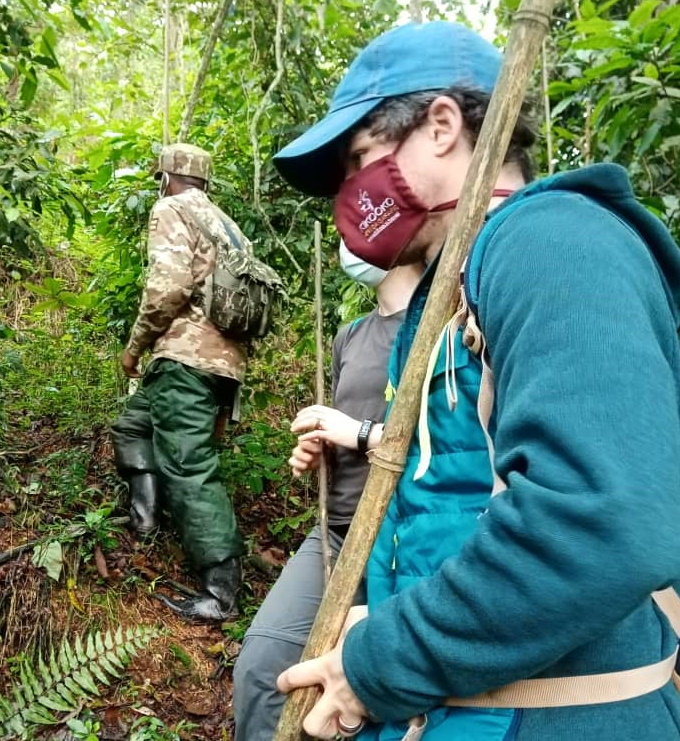
Embarking on a gorilla trekking adventure requires careful planning and preparation to ensure a smooth and enjoyable experience. From booking your trip to obtaining permits and visas, taking care of your physical fitness, and knowing what to pack, there are several important aspects to consider. In this section, we will guide you through the essential steps to help you plan and prepare for your gorilla trekking adventure.
Booking Your Trip
When it comes to booking your gorilla trekking trip, it is advisable to plan well in advance. Gorilla permits, which grant you access to visit the habituated gorilla families, are limited in number and can sell out quickly, especially during peak seasons. It is recommended to book your permits several months in advance to secure your spot.
To book your trip, you can either reach out to tour operators specializing in gorilla trekking or directly contact the national park authorities responsible for issuing the permits. It is important to research reputable operators or agencies that have experience in organizing gorilla trekking trips and have a strong commitment to responsible tourism and conservation.
When selecting a tour operator, consider factors such as their track record, customer reviews, and the services they offer. A reliable operator will assist you in securing permits, arranging transportation, and providing knowledgeable guides who will enhance your overall experience. They can also help you with additional activities, accommodations, and other logistics related to your trip.
Obtaining Permits and Visas
Permits are a prerequisite for gorilla trekking, and each destination has its own permit issuance process. It is essential to familiarize yourself with the specific requirements and procedures for obtaining permits in your chosen destination.
In Rwanda, permits for Volcanoes National Park can be obtained through the Rwanda Development Board (RDB). The RDB has an online booking system, and it is recommended to apply early to ensure availability. Depending on your nationality, you may also need to obtain a visa to enter Rwanda, which can typically be obtained upon arrival at the airport or through an e-visa application.
For gorilla trekking in Bwindi Impenetrable National Park, Uganda, permits can be obtained through the Uganda Wildlife Authority (UWA). The UWA has an online booking system as well, and it is advisable to apply for permits in advance. Uganda also requires visitors to obtain a tourist visa, which can be obtained online or upon arrival at the designated entry points.
In the case of Virunga National Park in the Democratic Republic of Congo, permits can be obtained through the park authorities. Due to the ever-changing security situation in the region, it is crucial to stay updated on travel advisories and ensure that it is safe to visit the park. The Democratic Republic of Congo also requires visitors to obtain a visa in advance, which can be obtained through the embassy or consulate of the country.
Physical Fitness and Health Considerations
Gorilla trekking involves hiking through dense forests and rugged terrains, which can be physically demanding. It is important to assess your physical fitness level and consult with a healthcare professional before embarking on a gorilla trekking adventure. While the trekking duration and difficulty can vary, being in good health and having a reasonable level of fitness will enhance your overall experience.
It is also advisable to get vaccinated and take necessary precautions to protect your health during the trip. Consult with a travel medicine specialist or your healthcare provider to receive up-to-date information on recommended vaccinations, malaria prophylaxis, and any specific health concerns related to the destination.
What to Pack for a Gorilla Trek
Packing the right gear and essentials is essential to ensure your comfort and safety during the gorilla trek. Here are some items that should be included in your packing list:
- Sturdy Hiking Boots: Invest in a good pair of hiking boots with ankle support and a strong grip for traversing uneven terrain.
- Comfortable Clothing: Dress in layers, as temperatures can fluctuate throughout the day. Opt for lightweight, moisture-wicking fabrics that dry quickly. Long-sleeved shirts and pants will protect you from insects and thorny vegetation.
- Rain Gear: Pack a waterproof jacket, pants, and a poncho or rain cover for your backpack, as rain showers are common in gorilla habitats.
- Daypack: Carry a small daypack to hold essentials such as water, snacks, camera equipment, and personal items.
- Water and Snacks: Stay hydrated by carrying a refillable water bottle. Pack energy-boosting snacks to keep you fueled during the trek.
- Insect Repellent: Protect yourself from mosquitoes and other insects by applying insect repellent with DEET or another effective ingredient.
- Sun Protection: Pack sunscreen, sunglasses, and a wide-brimmed hat to shield yourself from the sun’s rays.
- Camera and Binoculars: Capture the incredible moments and wildlife encounters with a good quality camera. Binoculars will enhance your ability to spot wildlife in the distance.
- First Aid Kit: Carry a basic first aid kit with essentials such as band-aids, antiseptic cream, pain relievers, and any necessary prescription medications.
- Other Essentials: Don’t forget to pack a headlamp or flashlight, extra batteries, a power bank, a waterproof bag for your electronics, and a trekking pole for added stability.
Dos and Don’ts During the Trek
Responsible gorilla trekking involves adhering to certain guidelines to ensure the safety and well-being of both the gorillas and visitors. Here are some dos and don’ts to keep in mind during your gorilla trek:
Dos:
- Follow the instructions of your guide and ranger at all times.
- Keep a distance of at least 7 meters (21 feet) from the gorillas.
- Maintain a quiet and calm demeanor during the encounter.
- Observe the gorillas without direct eye contact or pointing.
- Stay in your group and avoid approaching the gorillas if they move closer to you.
- Respect the gorillas’ territory and do not touch or feed them.
Don’ts:
- Do not trek if you are feeling unwell, as gorillas are susceptible to human diseases.
- Do not use flash photography, as it can disturb the gorillas.
- Do not litter or leave any trace behind. Respect the environment and pack out what you bring in.
- Do not attempt to mimic gorilla vocalizations or behaviors.
- Do not consume food or drinks in the presence of the gorillas.
Following these guidelines will help ensure a safe and respectful encounter with the gorillas while minimizing any potential negative impact on their natural behavior.
Effective Communication and Order Management
Effective communication and order management are crucial aspects of a successful gorilla trekking experience. During the trek, clear communication between guides, rangers, and visitors ensures a safe and coordinated adventure while maximizing the chances of locating and observing the gorillas. In this section, we will explore the importance of effective communication and order management, as well as the roles of the various individuals involved.
The Role of Guides and Trackers
Guides and trackers play a pivotal role in ensuring a successful gorilla trekking experience. These knowledgeable individuals are well-trained in gorilla behavior, habitat, and tracking techniques. They possess a deep understanding of the gorillas’ movements and are skilled at interpreting signs of their presence, such as tracks, dung, and feeding sites.
During the trek, guides lead the way, guiding visitors through the dense forests and navigating the terrain. They provide insights about the gorillas, their behavior, and the surrounding ecosystem. Their expertise enhances the overall experience, enriching visitors’ understanding of these magnificent creatures and their conservation needs.
Trackers work closely with the guides to locate the gorilla families before visitors embark on the trek. They venture into the forest early in the morning, following the gorillas’ trails from the previous day. Their expertise in tracking allows them to locate the gorillas’ current whereabouts and communicate this information to the guides, ensuring a timely and efficient trekking experience.
Group Management and Order
To ensure a controlled and harmonious gorilla trekking experience, visitors are divided into small groups, typically consisting of a maximum of eight individuals. This group management system allows for a more intimate encounter with the gorillas while minimizing disturbance to their natural behavior.
Group management and order are carefully maintained during the trek to ensure the safety of both visitors and gorillas. The groups are assigned specific gorilla families to visit, and each group is accompanied by a guide and armed rangers for protection. The rangers act as a line of defense in case of any potential threats and also help to enforce the rules and regulations of gorilla trekking.
Visitors are expected to follow the instructions and guidance of their guide and rangers at all times. This includes maintaining a safe distance from the gorillas, remaining calm and quiet during the encounter, and respecting the gorillas’ habitat. By adhering to these guidelines, visitors contribute to the conservation efforts and help protect the gorillas’ natural behavior.
Communication Techniques
Effective communication between guides, trackers, and visitors is essential for a smooth and coordinated gorilla trekking experience. Guides use various techniques to communicate important information and ensure a seamless encounter with the gorillas. These techniques may include:
- Verbal Communication: Guides communicate orally with visitors, providing instructions, sharing knowledge about gorillas, and answering questions. They use clear and concise language to convey information effectively.
- Non-verbal Communication: Non-verbal cues, such as hand signals and gestures, are commonly used to communicate silently during the trek. Guides may use these signals to indicate when to stop, crouch down, or maintain distance from the gorillas.
- Whispering: During the encounter with the gorillas, guides may advise visitors to whisper or speak softly to minimize any disturbance. This helps maintain a calm and peaceful atmosphere, ensuring a more natural interaction with the gorillas.
- Radio Communication: Guides and trackers may use two-way radios to communicate with each other and share information about gorilla locations or any changes in the trekking plan. This allows for real-time updates and ensures a coordinated effort among the different groups.
By employing these communication techniques, guides and trackers facilitate effective coordination, enhance safety measures, and maximize the chances of a successful gorilla trekking experience.
The Importance of Respectful Behavior
Respecting the gorillas and their habitat is paramount during the trek. It is essential to adhere to the rules and regulations set in place to protect these endangered creatures. By demonstrating respectful behavior, visitors contribute to the long-term conservation of gorillas and their fragile ecosystems.
Respectful behavior includes maintaining a safe distance from the gorillas, refraining from touching or feeding them, and avoiding direct eye contact or pointing. It is important to remember that gorillas are wild animals and should be treated as such. By observing them from a distance and allowing them to go about their daily activities undisturbed, visitors can ensure a more natural and authentic encounter.
Additionally, respecting the environment and leaving no trace is crucial. Visitors should avoid littering and ensure that all waste is properly disposed of. By minimizing our impact on the gorillas’ habitat, we contribute to the preservation of their natural environment for future generations to enjoy.
In conclusion, effective communication and order management are vital components of a successful and meaningful gorilla trekking experience. Guides and trackers play a crucial role in guiding visitors, locating the gorillas, and providing valuable insights. By following their instructions, respecting the environment, and demonstrating respectful behavior, visitors can contribute to the conservation efforts and ensure a memorable encounter with these awe-inspiring creatures.
Conservation Efforts and Impact of Gorilla Trekking
Gorilla trekking not only provides an extraordinary wildlife experience but also plays a significant role in the conservation of these incredible creatures and their fragile ecosystems. In this section, we will explore the conservation efforts in place and the positive impact that gorilla trekking has on gorilla populations, local communities, and the overall conservation landscape.
Conservation Organizations and Initiatives
Numerous conservation organizations and initiatives are dedicated to the protection and preservation of gorillas and their habitats. These organizations work closely with local communities, governments, and other stakeholders to implement strategies that address the various threats faced by gorillas, including habitat loss, poaching, and disease.
One such organization is the International Gorilla Conservation Programme (IGCP), a partnership between the African Wildlife Foundation (AWF), Fauna & Flora International (FFI), and the World Wide Fund for Nature (WWF). The IGCP focuses on conservation efforts in the Virunga Massif, which spans across Rwanda, Uganda, and the Democratic Republic of Congo. Their work includes habitat protection, community engagement, law enforcement, and research.
Other organizations, such as the Dian Fossey Gorilla Fund International, the Gorilla Doctors, and the Max Planck Institute for Evolutionary Anthropology, also contribute to gorilla conservation through research, veterinary care, and community development programs. These organizations play a crucial role in monitoring gorilla populations, studying their behavior, providing medical assistance, and raising awareness about the importance of gorilla conservation.
Economic Benefits and Community Development
Gorilla trekking has significant economic benefits for the local communities residing near gorilla habitats. The revenue generated from gorilla permits, accommodation, transportation, and other related services contributes to the development of infrastructure, education, healthcare, and other essential needs of the communities.
By providing employment opportunities, gorilla trekking helps alleviate poverty and improve the livelihoods of local residents. It creates jobs as guides, trackers, porters, lodge staff, and various support services. These employment opportunities empower local communities, enabling them to participate actively in conservation efforts and promoting a sense of ownership and stewardship towards the gorillas and their habitats.
Furthermore, gorilla trekking has led to the growth of sustainable tourism in the region. The influx of visitors contributes to the local economy, stimulates the growth of small businesses, and encourages the development of eco-friendly accommodations and services. This, in turn, fosters a more sustainable approach to tourism, ensuring that the economic benefits are balanced with the long-term conservation of gorillas and their habitats.
Conservation Education and Awareness
Gorilla trekking serves as a powerful tool for raising awareness about gorilla conservation and broader environmental issues. Through direct encounters with gorillas and the guidance of knowledgeable guides, visitors gain a deeper understanding of the importance of conserving these remarkable creatures and the ecosystems they inhabit.
During the trek, guides often share information about the threats facing gorillas, the ongoing conservation efforts, and the role that visitors can play in supporting conservation initiatives. This educational component of gorilla trekking helps create a sense of environmental responsibility and encourages visitors to become advocates for gorilla conservation in their own communities.
Furthermore, the revenue generated from gorilla permits and tourism activities is often reinvested in education and awareness programs. These programs target local communities, schools, and tourists, providing information about the significance of gorilla conservation and the need to protect their habitats. By fostering a culture of conservation awareness, these initiatives contribute to the long-term sustainability of gorilla populations and their fragile ecosystems.
Sustainable Tourism and Responsible Travel
As the demand for gorilla trekking experiences continues to grow, it is essential to ensure that tourism activities are conducted in a sustainable and responsible manner. Sustainable tourism practices aim to minimize negative impacts on the environment, respect local cultures, and support conservation efforts.
Responsible travelers can contribute to the conservation of gorillas by choosing tour operators and accommodations that prioritize sustainability and conservation. These operators adhere to ethical guidelines, support local communities, and minimize their environmental footprint. By selecting responsible operators, visitors can ensure that their tourism activities have a positive impact on gorilla conservation and local development.
Additionally, visitors should adhere to the guidelines and regulations set in place during gorilla treks. By following the instructions of guides and rangers, maintaining a respectful distance from the gorillas, and respecting their habitat, visitors can minimize disturbance and help protect the gorillas’ natural behavior.
In conclusion, gorilla trekking has a profound impact on gorilla conservation, local communities, and the broader conservation landscape. Through the efforts of conservation organizations, economic benefits for communities, conservation education, and responsible tourism practices, gorilla populations have a better chance of survival. By embarking on a gorilla trekking adventure, visitors not only have the opportunity to witness these incredible creatures in their natural habitat but also contribute to their long-term conservation.
Planning and Preparing for Gorilla Trekking
Embarking on a gorilla trekking adventure is an exciting and once-in-a-lifetime experience. To ensure a smooth and enjoyable trip, proper planning and preparation are essential. In this section, we will guide you through the necessary steps to plan and prepare for your gorilla trekking adventure.
Booking Your Trip
The first step in planning your gorilla trekking adventure is to book your trip. Research reputable tour operators or travel agencies that specialize in gorilla trekking and have a good track record. They can assist you in arranging all the necessary logistics, including permits, accommodations, transportation, and guides.
As Kikooko Africa Safaris, we’ve been providing gorilla trekking tours since our launch in 2013. In addition to conservation efforts, our tours also support the local communities here in Uganda.
It is important to book your trip well in advance, especially during peak seasons when demand for gorilla permits is high. Gorilla permits are limited and tend to sell out quickly. Make sure to check the availability of permits and secure them as early as possible to avoid disappointment.
Choosing the Right Destination
There are several destinations where you can see gorillas in the wild, including Volcanoes National Park in Rwanda, Bwindi Impenetrable National Park in Uganda, and Virunga National Park in the Democratic Republic of Congo. Each destination offers a unique experience, and your choice will depend on factors such as accessibility, budget, and personal preferences.
Consider the location and accessibility of each destination. Some may require long flights or overland travel, while others may be more easily accessible. Take into account the associated costs of travel, permits, accommodations, and other expenses to ensure that it aligns with your budget.
Research the specific rules and regulations of each destination, including permit requirements, group size limitations, and trekking guidelines. This will help you understand the expectations and prepare accordingly for your gorilla trekking adventure.
Obtaining Gorilla Permits
Gorilla permits are required to visit the habituated gorilla families in their natural habitat. These permits are issued by the respective national park authorities and are limited in number to regulate the number of visitors and minimize the impact on gorilla populations.
To obtain gorilla permits, contact the national park authorities or work with a reputable tour operator who can assist you in the permit application process. Be prepared to provide necessary information such as travel dates, passport details, and payment. It is advisable to apply for permits well in advance, as they can sell out quickly, especially during peak seasons.
Travel With Kikooko Africa Safaris To See Gorillas In The Wild
Ready to start planning your trip to see gorillas in the wild? Let us know what kind of trip you’re interested in and we’d be happy to start designing it for you today!
